Drooling, chewing and mild fussing are the most common baby teething symptoms
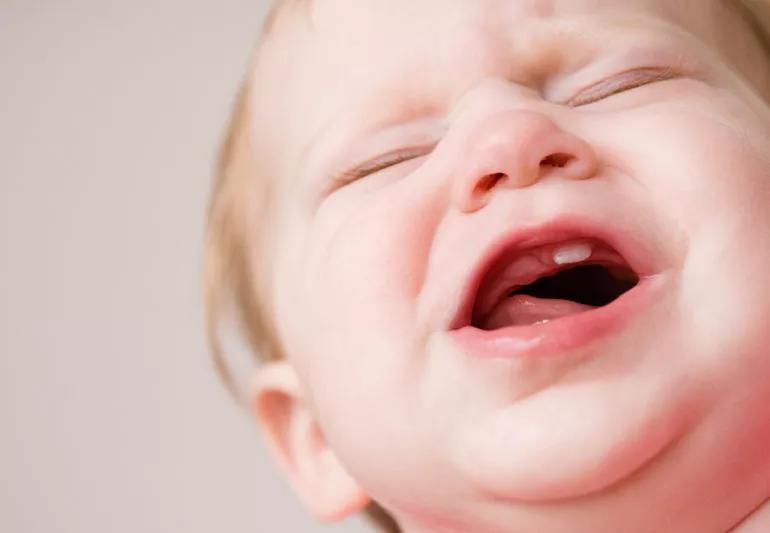
Getting a new tooth is one of those telltale signs that your little baby is growing up so fast. So, it’s natural to look forward to that tooth erupting with excitement — and maybe a bit of nervousness and a bunch of questions about what to expect:
Advertisement
Cleveland Clinic is a non-profit academic medical center. Advertising on our site helps support our mission. We do not endorse non-Cleveland Clinic products or services. Policy
When it comes to baby teething symptoms, there’s a lot of conflicting information out there. Some people say teething is excruciating. That it’ll keep your baby from sleeping. That teething can be blamed for a fever, diaper rash and just about any other ailment.
All myths, says pediatrician Lisa Diard, MD.
“Teething can cause some mild discomfort and fussiness, but anything more than that should be evaluated as a more serious concern,” she says.
Here, Dr. Diard breaks separates teething fact from fiction.
Most babies get their first tooth sometime around 6 months old, but it could be as early as 4 months or as late as 15 months. (Fun fact: It’s rare, but some babies are even born with a tooth or two!) Most toddlers will have a full mouth of 20 baby teeth by the time they’re about two and a half.
The American Academy of Pediatrics says kids who are teething “are little different from kids who are not teething.” In other words, teething shouldn’t be a major upset in your baby’s day (or yours).
“Teething can cause mild gum pain for babies, but it shouldn’t be anything that severely derails their regular mood or schedule,” Dr. Diard states.
Advertisement
Some babies won’t show any signs a new tooth is about to poke through. Others may:
Teething symptoms tend to peak as the tooth works toward making its debut, but will taper off when the tooth becomes visible. That should take about three or four days.
Any parent with a little one in that teething window knows it’s easy to blame teething for just about everything:
It’s a correlation versus causation thing. In other words, sure, babies get fevers and diaper rash and have bad nights here and there. That’s all part of being a baby.
Sometimes, those things happen to come up around the time they’re getting new chompers. But that doesn’t mean that teething is causing those symptoms. They’ll be getting new teeth regularly for a pretty solid two years, after all. They’re bound to have a bad day at some point during that time. It doesn’t mean they’re acting differently because of teething.
Dr. Diard walks us through a few of the symptoms that people tend to brush off as a part of teething but are actually unrelated.
Probably one of the best-known myths around says that teething babies will spike a fever. Not only is that not true, Dr. Diard says, but it can also be a dangerous misconception.
“If your baby has a fever, you don’t want to ignore it and think it’s something it’s not,” she continues. “Teething doesn’t cause a fever. If your baby has a fever, something else is going on.”
But here’s the thing, you may be thinking of a fever in different terms than a healthcare provider does.
Some parents tend to think their child is showing a fever if their temperature is anything above their normal range — generally around 98.6 degrees Fahrenheit (37 degrees Celsius). But healthcare providers define a fever as anything higher than 100.4 F (38 C).
Teething may cause your child to have a body temperature that’s higher than normal, but still below the threshold for a fever.
| Temperature | Definition | Is their temperature related to teething? | What to do? |
|---|---|---|---|
| About 97.7 to 98.6 F (36.5 to 37 C) | Normal, healthy range. | Could be. | Nothing. |
| About 98.7 F to 100.3 F (37 C to 37.94 C) | Elevated temperature. | Could be. | Monitor at home. |
| 100.4 F to 103.9 F (38 C to 39.94 C) | Fever. | No. | Baby younger than 3 months: Contact your provider.Baby older than 3 months: Treat at home and call a provider if it doesn’t improve in about three days. |
| 104 F or higher (40+ C) | High fever. | No. | Seek emergency medical advice. |
| Temperature | |||
| About 97.7 to 98.6 F (36.5 to 37 C) | |||
| Definition | |||
| Normal, healthy range. | |||
| Is their temperature related to teething? | |||
| Could be. | |||
| What to do? | |||
| Nothing. | |||
| About 98.7 F to 100.3 F (37 C to 37.94 C) | |||
| Definition | |||
| Elevated temperature. | |||
| Is their temperature related to teething? | |||
| Could be. | |||
| What to do? | |||
| Monitor at home. | |||
| 100.4 F to 103.9 F (38 C to 39.94 C) | |||
| Definition | |||
| Fever. | |||
| Is their temperature related to teething? | |||
| No. | |||
| What to do? | |||
| Baby younger than 3 months: Contact your provider.Baby older than 3 months: Treat at home and call a provider if it doesn’t improve in about three days. | |||
| 104 F or higher (40+ C) | |||
| Definition | |||
| High fever. | |||
| Is their temperature related to teething? | |||
| No. | |||
| What to do? | |||
| Seek emergency medical advice. |
Fevers are our immune system’s way of taking care of business — fighting off an infection. And not all fevers are a reason to worry.
But Dr. Diard says you should talk with your children’s healthcare provider if:
Advertisement
Another teething myth that’s been passed through the ages is that teething leads to diaper rash.
Not true, Dr. Diard says.
The old tale goes that teething creates more drool. That part’s true. The myth comes next.
Some people will tell you that when your baby swallows that extra saliva, it mixes up in their bellies and creates loose stool (aka everyone’s least-favorite diaper change.) And — as you probably know all too well — runny poop can be a diaper rash waiting to happen.
But the theory hasn’t proven out in research. So, if your baby has a diaper rash, you’ll want to consider a cause other than teething.
Common causes of baby diaper rash include:
Advertisement
To avoid diaper rash, change your baby’s bottom as soon as possible when it’s wet or soiled. If it’s too late, stick to soap and water instead of baby wipes, and try an ointment with zinc oxide to manage diaper rash.
All babies are different. Some snooze away in their crib with little fuss. Others want to party all night long. And just when you think you got it all figured out … BAM! … sleep regression.
Just as with any other aspect of their lives, babies go through a lot of phases when it comes to sleep, but teething doesn’t play a role in their sleep habits.
“Some parents worry that teething is causing their baby too much pain for them to sleep well,” Dr. Diard says. “But the discomfort of teething is pretty mild. It doesn’t affect sleep.”
Help your baby get enough sleep they need by:
Teething can sound like this big, scary change in your baby’s life. And no one wants to think their baby is in pain or discomfort. But knowing that not every fuss, whine or fever is part of teething can bring some peace of mind.
In truth, teething shouldn’t be that hard on your baby. If your baby is showing symptoms like fever, diaper rash or sleeplessness, look for other solutions. And don’t hesitate to talk with your children’s healthcare provider. They can help you find solutions, rather than placing the blame on your child’s teeth.
Advertisement
Learn more about our editorial process.
Advertisement

Stick to clean, cold compresses, and avoid topical ointments
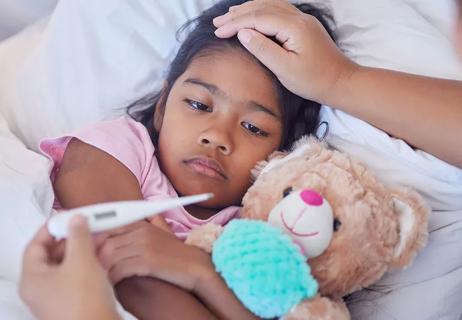
Vomiting and fevers are a hard no — other symptoms are a judgment call
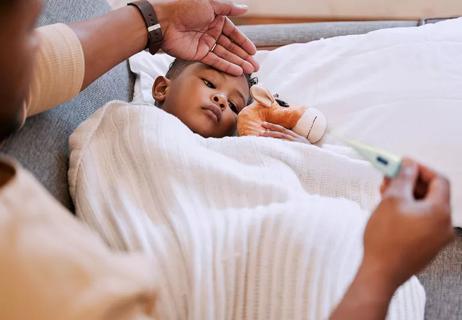
Awareness and prompt treatment can help keep your family safe
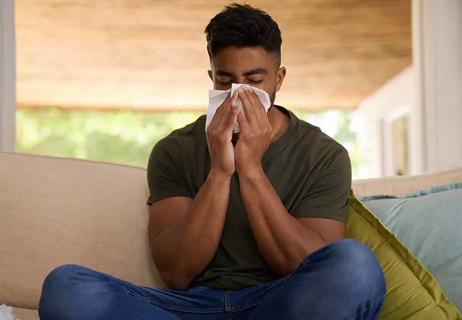
Infections like sinusitis, colds, flu and COVID-19 can cause a fever, but allergies aren’t infections
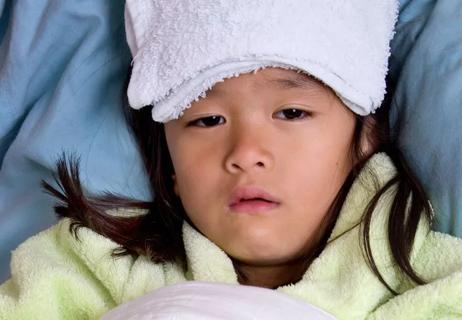
It can cause alcohol poisoning and other serious health issues, especially in kids

It’s important not to give them fever-reducing medications right off the bat
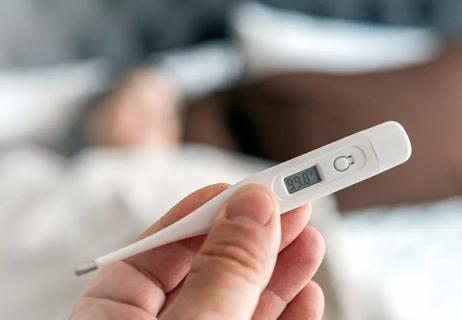
There’s no one answer, as your temperature fluctuates throughout the day and your life

The advice dates to 1574, but it doesn’t quite meet modern medical guidelines

Type 2 diabetes isn’t inevitable with these dietary changes

Applying a hot or cold compress can help with pain